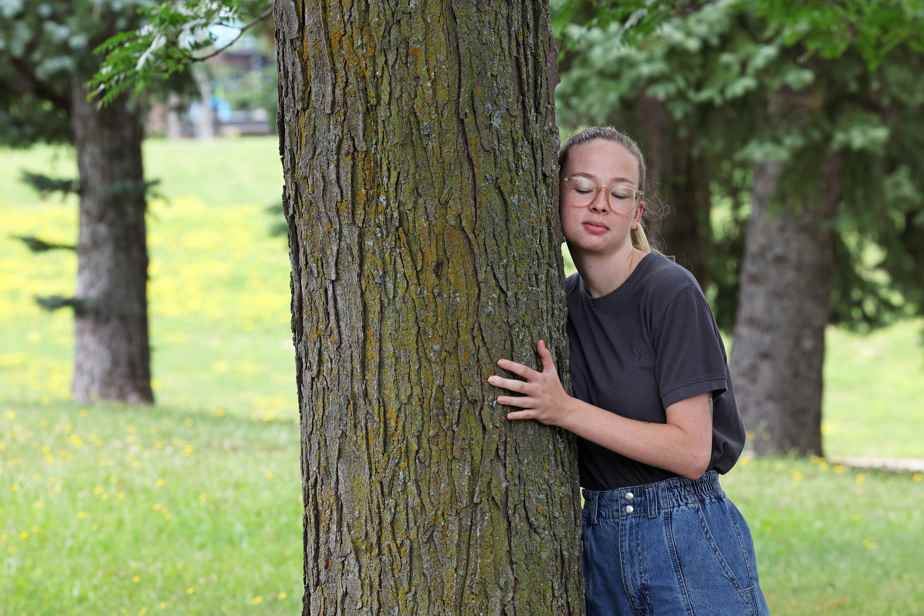Posted at 6:47 a.m.
What a prolific and ingenious edition of the Triennale Banlieue! in the Alfred-Pellan room of the Maison des arts de Laval. After the creations around the stories of life in 2015, the migrations seen under the magnifying glass of the theater in 2018, the exhibition, this year, deals with the territory considered from the point of view of geography and the relationship to nature. The curators are Marie Perrault and Yan Romanesky, supported by the expertise of a solid scientific committee.
A tip, first: before starting the tour, watch the 18-minute video in which the themes of the exhibition are discussed. Urban planner Samuel Descôteaux Fréchette outlines the history of the emergence of suburbs in Quebec before addressing the ecological future of our suburbs. Biologist Anaïs Boutin talks about the importance of wetlands in inhabited areas, then Louis Tremblay, geographer, teaches us that ecological corridors are necessary in the suburbs to allow species to circulate. It also addresses the incessant demand of nature lovers to ban pesticides and other harmful products both for human health and for that of fauna and flora in general.
The importance of adopting a new look in the suburbs – but elsewhere too! – is well illustrated by the plant artwork A paradise for a parking lot, which Ottawa artist Deborah Margo created on the grass strips bordering the Montmorency College parking lot, near the Maison des arts de Laval. You will see that the lawn, cut short, has been replaced for about twenty meters by a cocktail of plants and flowers (echinacea, daisies, asters, chamomile, goldenrod, etc.). An undisguised invitation to the Laval college to put an end to this grass which turns yellow when it does not rain enough, its roots being shallow, which is not the case with a variety of species more resistant to drought and more friendly to bees and other insects.

PHOTO ROBERT SKINNER, THE PRESS
In the foreground, the plant work of Deborah Margo
Also outside, Eugenia Reznik’s evolving installation, Listen to the field of rootswith benches, potato plants and two speakers, evokes rooting (with sound testimonies from Lavalloises and Lavallois), the importance of the potato in the human diet and also traditions to create connections between people.

PHOTO ROBERT SKINNER, THE PRESS
The installation of Eugenia Reznik, artist of Ukrainian origin
Nearby, we had an unusual experience listening to… breathe a tree. A poetic and sensitive installation by Scenocosme, a collective of Lyon artists Grégory Lasserre and Anaïs met den Ancxt. We won’t tell you more! Go experience it and try to find the trick…
In the Alfred-Pellan room, the selection of the two commissioners is of great variety and gives many food for thought on the challenges of the suburbs in the context of the climate crisis.
Celebration of loose earth with the installation of Marie Côté. A new original survey by Nicolas Grenier, using colors, on the vision we have of our environment. An aquaponics laboratory – where fish, plants and bacteria work in symbiosis to promote life – a great idea from Sophie Aubry.
There are also four photographs on the impact of fire in the suburbs of British Columbia, a work by Andreas Rutkauskas. A field of wheat ears (in plastic) by Ludovic Boney, where you can walk. Nature conquered, as in the days of the Wild West, with the magnificent video Searchers, by Ontario’s Louise Noguchi. Outdated suburban scenes, obviously by Steven Orner! Or the humorous library of tools for birds by Richard Ibghy and Marilou Lemmens. Look closely to appreciate the fantasy used to talk about the (real) work of birds. When we tell you that this Triennial combines social responsibility, ecological awareness and pleasure for the eyes, these are not empty words!
Co-curator Marie Perrault wanted to deal with the variety of relationships suburbanites have with nature. And present works that can be scientifically interpreted, which gives substance to the exhibition, thanks to very complete labels. “The Triennale shows that there is a certain vitality in the suburbs and that if everyone puts their shoulder to the wheel, we could improve the presence of nature there, in different ways, to recreate natural environments, says -she. A bit like Louis Tremblay explains with ecological corridors. »
Note that throughout the month of August, the Maison des arts de Laval organizes, in parallel, free activities: manufacture of seed bombs, creation of cyanotypes, discussions, performances, visits and workshops, all proposed by the curators. , artists and scientists. Something to enhance a visit to this 3e Triennale Banlieue!, a much-needed look at suburban areas.

